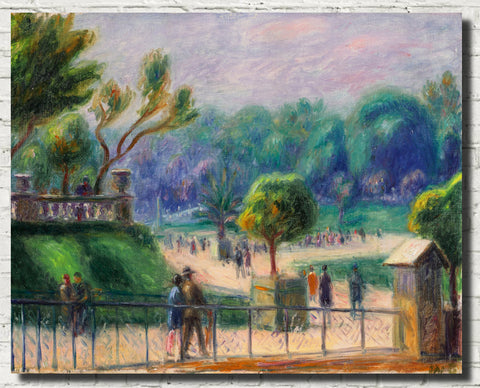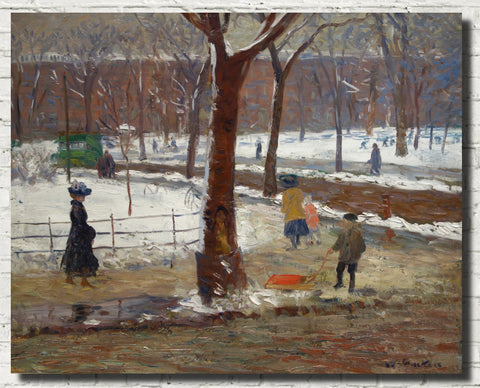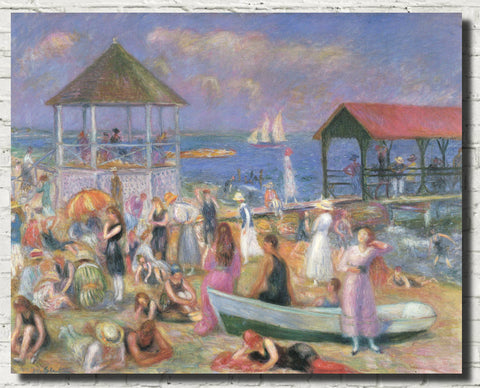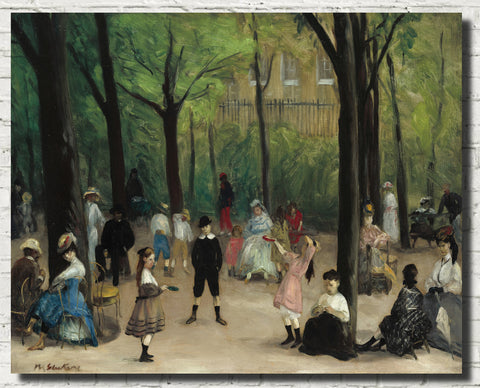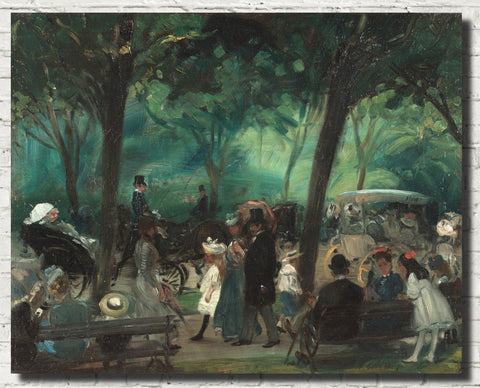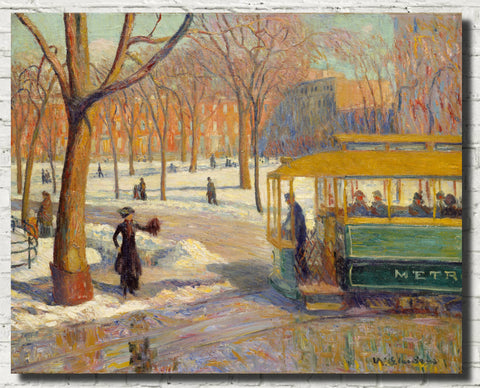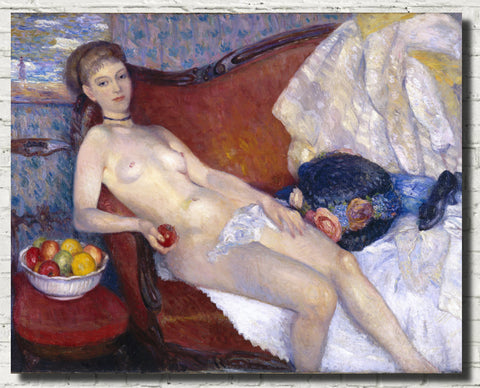William Glackens: A Pioneer of American Realism
Table of Contents:[hide]
William James Glackens, an influential figure in American art history, left a lasting legacy as a realist painter and a key member of the Ashcan School. His contributions to the art world, particularly in challenging traditional boundaries and embracing the vitality of everyday life, continue to resonate today. Let's delve into the life, career, and artistic evolution of this remarkable artist.
Early Life and Education
Born on March 13, 1870, in Philadelphia, Pennsylvania, Glackens displayed an early talent for drawing and drafting. His formal artistic training began at the Pennsylvania Academy of the Fine Arts in 1891, where he studied under renowned realist Thomas Anshutz.
Transition into Painting
Glackens initially pursued a career in newspaper illustration but soon shifted his focus to painting. Influenced by fellow artists like Robert Henri and his exposure to European art during travels to Holland and Paris, Glackens developed a distinctive style characterized by vibrant colors and a keen eye for urban scenes.
Glackens and The Eight
In New York, Glackens became associated with a group of artists known as The Eight, who rebelled against the conservative norms of the National Academy of Design. Their exhibitions sparked national debates about acceptable subject matter in art and paved the way for a new wave of American realism.
Evolution of Style
Throughout his career, Glackens' style underwent significant transformations. Initially drawn to dark, dramatic colors reminiscent of European masters, he later embraced a more luminous palette influenced by Impressionism. His subjects ranged from bustling city streets to serene landscapes and intimate portraits.
Legacy and Impact
Glackens' legacy extends beyond his artistic achievements. His role in acquiring European paintings for the Barnes Foundation in Philadelphia and his advocacy for emerging artists through organizations like the Society of Independent Artists solidified his reputation as a visionary within the art world.
Analysis of Artworks
Key works such as "Nude with Apple" and "Chez Mouquin" exemplify Glackens' ability to capture the essence of modern life with warmth and authenticity. His paintings, often compared to those of Renoir, reflect a celebration of joy and human connection amidst the complexities of the modern world.
Major Collectors and Exhibitions
Glackens' works found acclaim among prominent collectors like Albert C. Barnes and Duncan Phillips, whose patronage helped preserve his legacy for future generations. Exhibitions showcasing his art continue to draw audiences worldwide, reaffirming his status as a pioneering figure in American art history.
Conclusion
William Glackens' artistic journey embodies the spirit of innovation and resilience that defines the American realist movement. His commitment to depicting the beauty of everyday life and challenging artistic conventions left an indelible mark on the art world. As we rediscover his legacy, we are reminded of the enduring power of art to inspire, provoke, and illuminate the human experience.
William Glackens Prints and Canvas Panels
Prints and ready to hang canvas panels of William Glackens' paintings are available in a range of sizes with fast worldwide delivery.
William Glackens FAQ's
-
Who was William Glackens? William James Glackens was an American realist painter and a key figure in the Ashcan School, known for his vibrant depictions of urban life and everyday scenes.
-
When and where was William Glackens born? Glackens was born on March 13, 1870, in Philadelphia, Pennsylvania, where he spent much of his life.
-
What was Glackens' early artistic training? He attended the Pennsylvania Academy of the Fine Arts, studying under realist painter Thomas Anshutz, where he honed his skills in drawing and painting.
-
What is the Ashcan School, and how was Glackens involved? The Ashcan School was a group of American realist painters who rejected traditional artistic norms and focused on depicting urban life with honesty and immediacy. Glackens was a prominent member of this movement.
-
What influenced Glackens' artistic style? Glackens was heavily influenced by European art, particularly the works of Impressionists like Manet and Renoir. His travels to Europe and exposure to different artistic movements shaped his distinctive style.
-
What are some of Glackens' notable artworks? Some of his famous works include "Nude with Apple," "Chez Mouquin," and "Jetties at Bellport," each showcasing his mastery of color, light, and human emotion.
-
Did Glackens work in any other artistic mediums? In addition to painting, Glackens also worked as an illustrator for newspapers and magazines, contributing to his versatile artistic career.
-
How did Glackens contribute to the art world beyond his paintings? Glackens played a significant role in acquiring European paintings for the Barnes Foundation in Philadelphia and advocating for emerging artists through various organizations and exhibitions.
-
What was Glackens' legacy? Glackens left behind a rich artistic legacy, influencing future generations of artists and contributing to the development of American realism. His works continue to be celebrated in major art institutions and exhibitions worldwide.
-
Where can I learn more about William Glackens and his art? You can explore books, articles, and exhibitions dedicated to Glackens' life and work, as well as visit museums and galleries showcasing his paintings to gain a deeper understanding of his artistic contributions.
Related Articles
Ashcan School
















